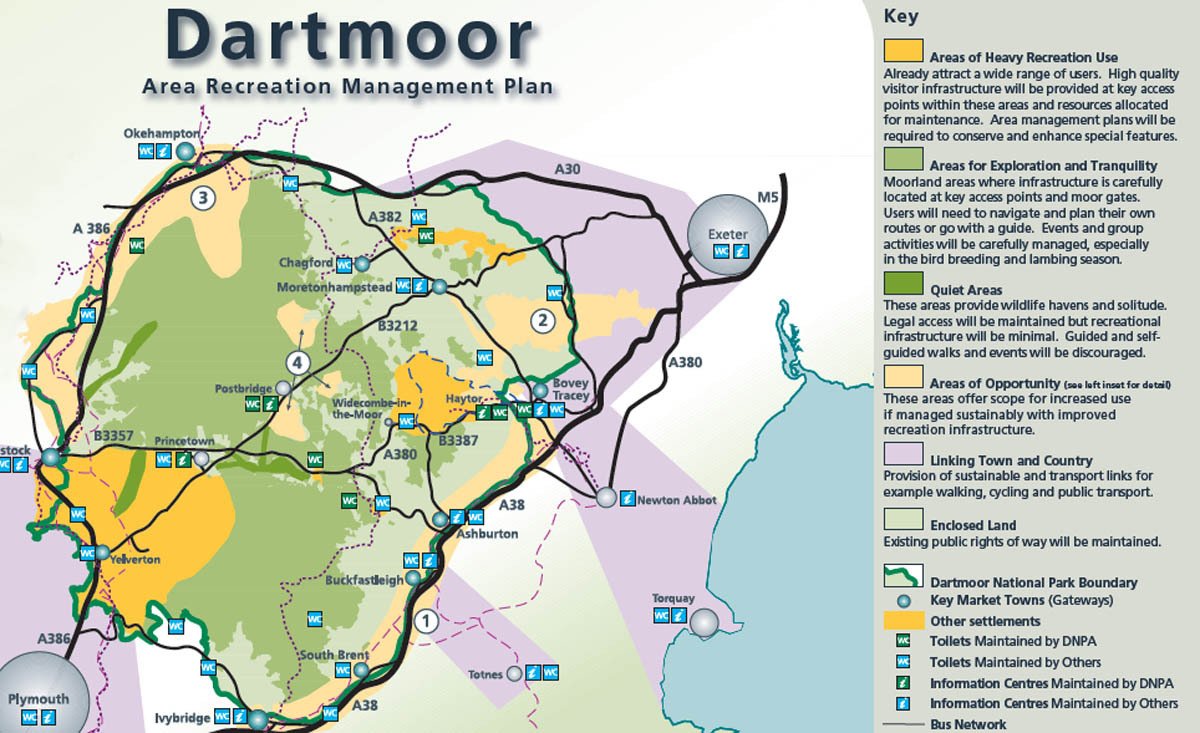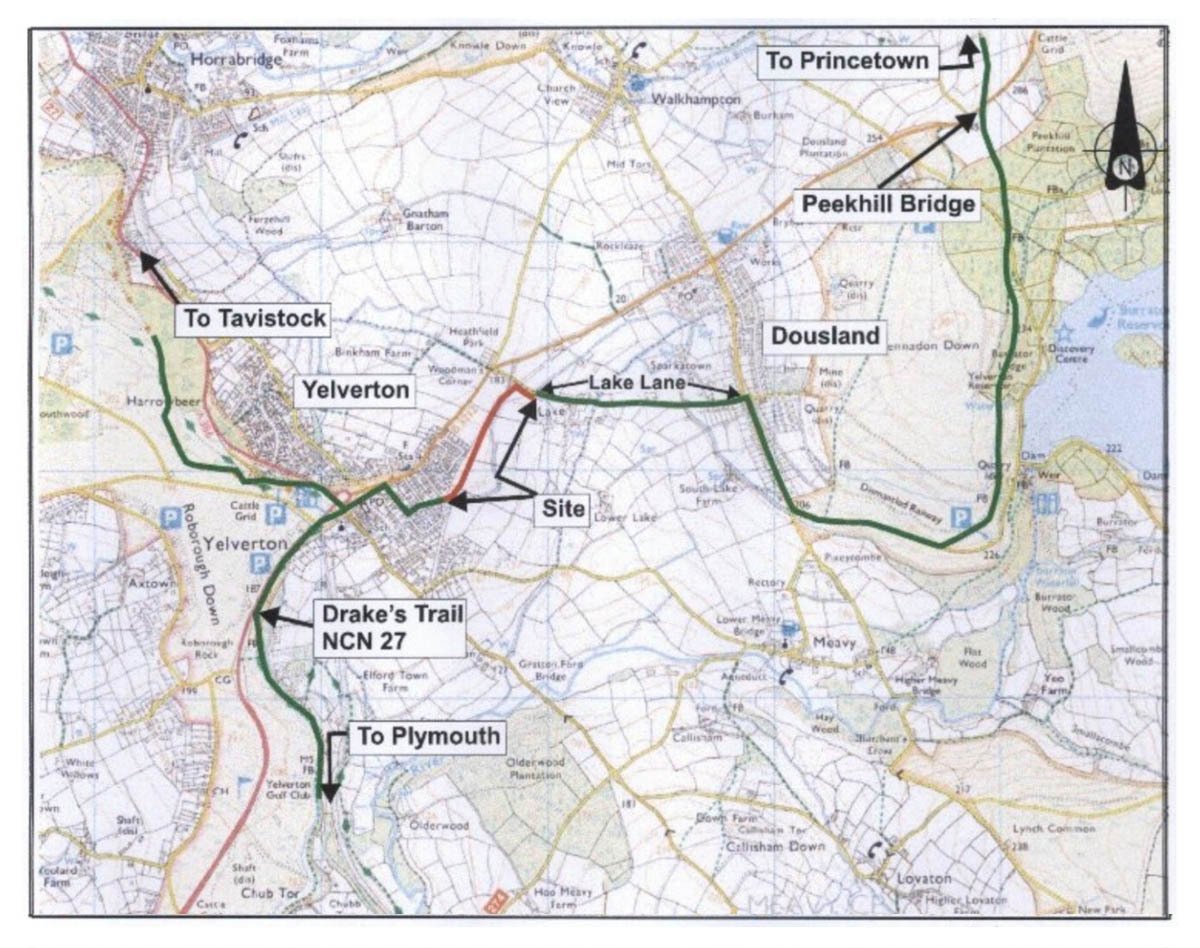
A recent West Country Voices article on the joys of mountain biking on Dartmoor reminded me how slow we have been to develop some pretty obvious cycling routes. The one that nags at me is the railway track from Yelverton to Princetown, disused since the line was closed 65 years ago. It is, sadly, not unique but helps illustrate the problems facing those of us who are impatient to see progress on active travel.
Railway tracks and active travel
It is 58 years since the Beeching cuts closed many of our railway lines, but don’t blame it all on him – many routes were out of service before he came along. At about the same time Michael Dower, a conservationist who, in 1992, became director general of Britain’s Countryside Commission, proposed that the track beds left after the cuts should form a national system of ‘greenways’. This is the first acknowledged reference to a network of strategic routes accessible by foot, cycle and horse.
It is 51 years since the Countryside Commission published ‘Disused Railways in the countryside of England and Wales’. It is a much longer document than Dower’s but adds little. The prospect of real action seems to have been replaced by theoretical discussions of what action might be taken. It is 39 years since John Grimshaw and Associates produced ‘Study of disused railways in England and Wales, potential cycle routes’. The Grimshaw approach has been to lead by example, cut the chatter and get on and build the things. It’s amazing that he is still going; it’s shocking that he is still having to.
It was Grimshaw’s report that first picked up the potential of the Yelverton to Princetown route, 26 years after the line’s closure (Annexe 26, Plymouth to Princetown) Those local to the area will be aware of course that the section falling outside of the National Park has been in place for a long time and is now a national favourite, forming part of the hugely successful Devon Coast to Coast path.
The failure to make progress within the park suggests that some of the optimism and forward thinking that national parks exhibited in their early years has been lost – a point made in different ways in Tony Whitehead’s excellent series of articles on Dartmoor’s wounded land.

Bridging the gap from Yelverton to Princetown
Fast forward to 2013 and we see Devon County Council (DCC) in association with Dartmoor National Park (DNP) landing a successful bid for £4.4m from the Department for Transport’s (DfT) ‘Linking Communities’ grant. The DCC cabinet subsequently approved a series of schemes, including the Yelverton to Princetown link, under the aptly named ‘Granite and Gears’ Dartmoor Cycling programme. The bid document suggests that DCC had a good grasp of the issues.
“There is a perception that Dartmoor is accessible only to highly committed cycling enthusiasts capable of self-navigation with a map and compass. This hugely limits the visitor base and potential benefits of cycling to the Dartmoor economy. This needs to be addressed and the perception of isolation and fear of being lost on Dartmoor removed.
“Research by Devon County Council has shown that it is the high-quality off-road routes that encourage people back into cycling or try it for the first time. In addition, on average 50 per cent of the usage of off-road trails, is by pedestrians, people with buggies and people on mobility scooters. By investing in high quality off-road facilities, we can benefit far more users than just cyclists, creating a larger net benefit to local communities and visitors.
“Cycling to and on Dartmoor is currently challenging for all but the most enthusiastic cyclists. This funding would allow partners to pursue projects which deliver high quality family-friendly, largely off-road multi-use routes, utilising improved canal tow paths and derelict railways to and on the moor and vastly improving traffic free access to Dartmoor.”
The words above may be standard fare for Devon, always a beacon authority for active travel, but they were a radical step forward for DNP.
So with £4.4m in the bank what happened next?
To be fair to DCC a lot of really good stuff did happen around the edges but when it comes to the the moor proper you start to struggle to see the legacy of all the good words and big chunks of money invested to “Vastly improve traffic free access to Dartmoor …” Sadly, The Yelverton to Princetown path has still not been completed.
For the vital Dousland to Yelverton link there were clearly delays in DCC securing the three parcels of land required and the subsequent planning permission. It seems, therefore, that this element dropped outside the funding window for the £4.4m DfT funding bonanza. But – in a sane world folk would have realised that as the really difficult and expensive stuff had been done, someone could have found the estimated £25,000 to finish the job!
So where are we now?
We have a path of sorts most of the way between Princetown and Dousland. The missing main road bridge has been replaced so you no longer have to lift your bike over a stile, down a flight of steps, cross a fast and busy road, up another flight of steps and, of course, negotiate another stile (I kid you not).
We have a leaflet: (please excuse me if I don’t get excited about this). However, the surface in places is appalling, the access barriers are a problem even for the able-bodied, maintenance seems mostly absent, and the route is still not complete. Note: the on-road alternative between Yelverton and Lake Lane is pretty lethal for experienced walkers and cyclists. Children, the disabled and equestrians should not attempt it!
The role of Dartmoor National Park
Is the problem the fact that that this path was put into the hands of DNP to deliver? (Scheme element 1 Cycling on Dartmoor). Sadly, it may be; despite their good words back in 2013 it feels as though things within the park have found reverse gear.
A bit harsh? Look at DNP’s Area Recreation Management Plan map at the top of this article. You will see that DNP has been studious in recording cycle routes outside the park but seems to have forgotten those within the park itself – including all those it championed back in 2013. The suspicious amongst us could be excused for feeling that greenway users taking quiet active recreation are not really that welcome within the park.
What needs to be done?
Devon County Council.
You have done the difficult and expensive stuff – you have the land and you have the planning permission. Better still, someone had the foresight to make a start on site, so you cannot claim that the permission has lapsed! Your own estimate of construction cost was a mere £25,000 which is small beer to a Highway Authority, so either step up and deliver this link or step aside and let others have a go. I am sure John Grimshaw and his volunteers would be happy to take it on if you met the cost of materials and plant. This section is no challenge compared with some of the tasks they have undertaken.
Dartmoor National Park Authority
You bemoan the 93 per cent of visitors coming to the park by car, yet seemingly turn your back on greenway users. Plus, I am sorry, but your car parks do appear to be better surfaced than your railway paths.
It is good that in your recent local plan consultation you talk of ‘Prioritizing cycle access to and within the park boundaries’, and encouraging to see the mention of ‘cycling and horse-riding improvement plans.’ However, there is not one single mention of the disused railway lines running to or within the park, either in terms of their value as a heritage asset or, more importantly, their potential role in sustainable access.
Can we please see a reworked ‘area recreation management plan’? One that recognises both the good words and maps that have gone before and genuinely welcomes all users? Do celebrate recent achievements such as the path from Newton Abbot to Mortonhampstead. But also acknowledge your failings with regards to existing routes and the missing links on and off the moor – Yelverton to Dousland and Bulliver Bridge spring to mind, but there will be others.
Don’t be afraid to put yourself on the map – the path up to Princetown, even in its current poor state, is worthy of inclusion within the National Cycle network. And finally, don’t forget the burgeoning e-bike market which can transform access for all abilities.
And, so as not to lay it all at the door of DNP:
Active Travel England:
You need to focus your attention on the role of national park authorities, as well as local councils, if we are to make real progress.
Us as individuals:
I think it is incumbent on all of us to highlight gaps and help to provide solutions. Experience in Devon and elsewhere shows that if we simply wait for the public authorities to act, we could be waiting a very long time.




